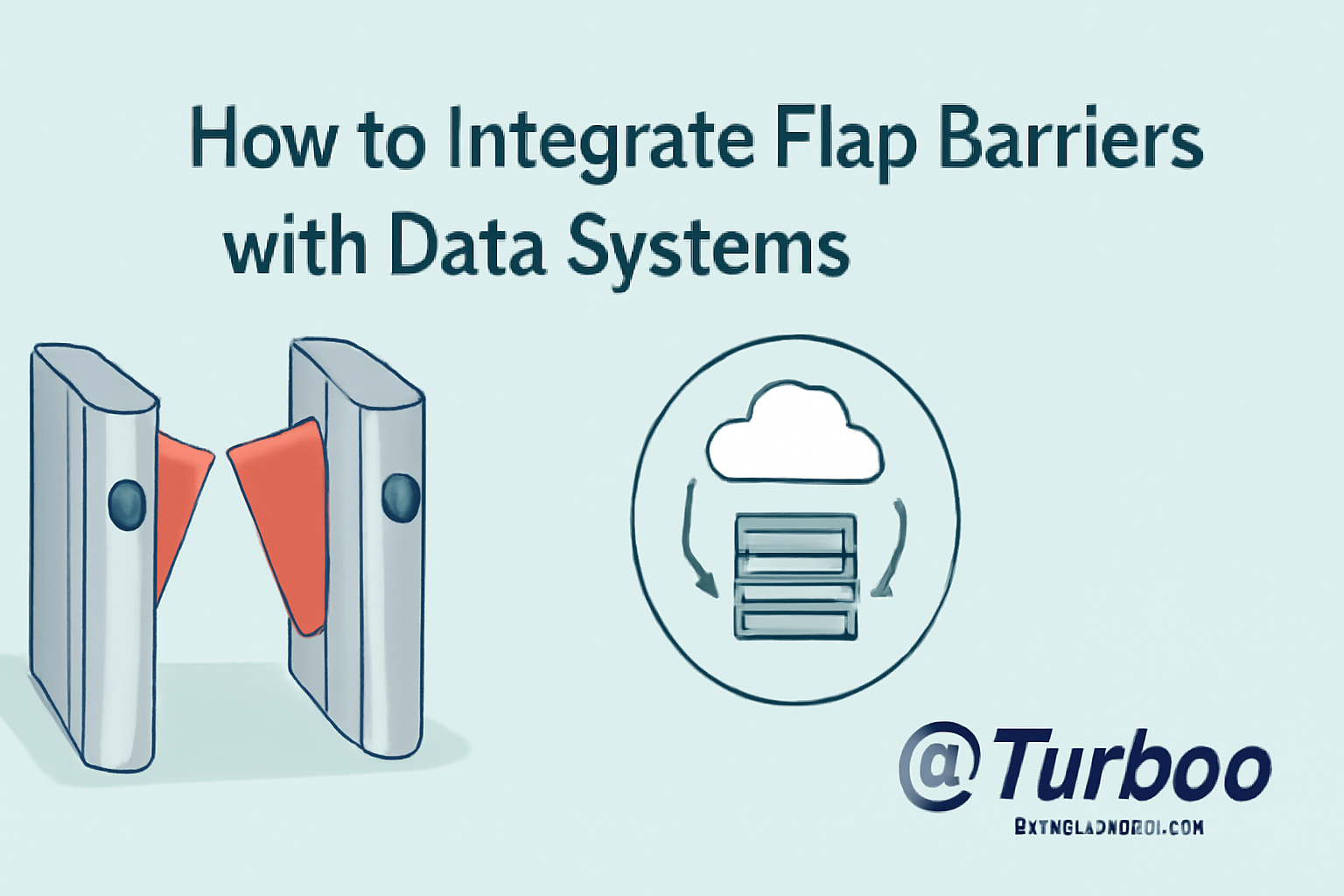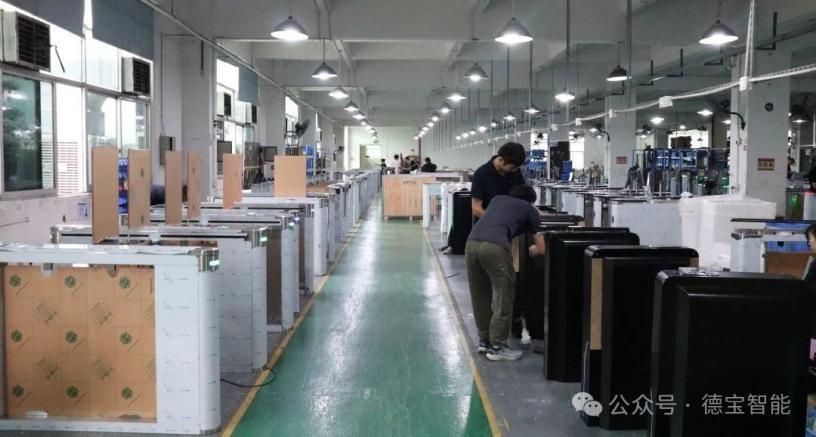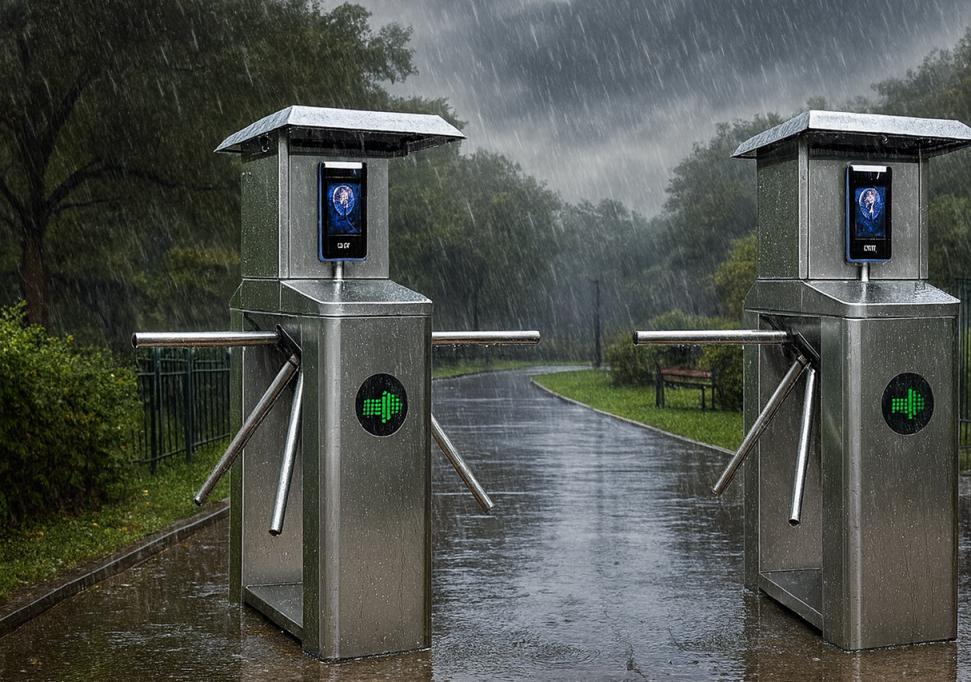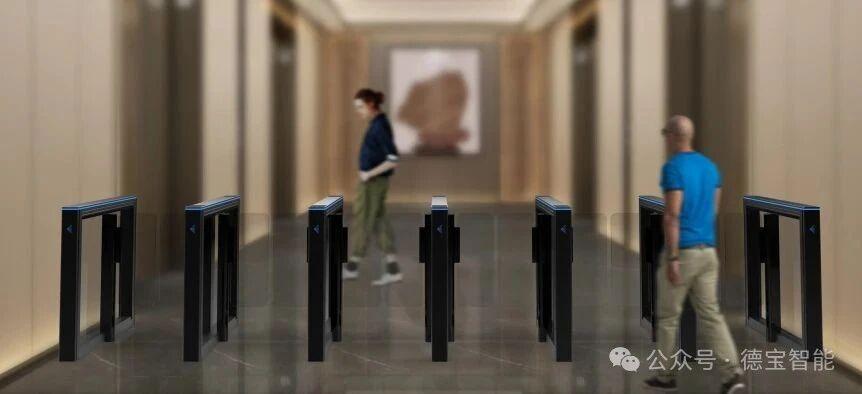How to Integrate Flap Barriers with Data Systems


In today’s fast-evolving security environment, physical access is no longer just about letting people in or out. It’s about knowing who entered, when, and why—and using that information to make smarter operational decisions. That’s where flap barrier integration with data systems becomes invaluable.
Flap barriers are no longer isolated units; they’re key components of larger, connected infrastructures. When linked with access control platforms, visitor management tools, and building automation systems, they empower organizations to maintain both security and fluidity. Whether you’re overseeing a corporate facility, an educational campus, or a government building, integrating your flap barriers into your data ecosystem opens up new levels of control, visibility, and responsiveness.
This guide breaks down how to connect flap barriers to your data systems step-by-step, ensuring a seamless blend of technology and physical security.
Why Integration is Now Essential
Modern facilities can’t afford disjointed security systems. Flap barriers without data integration provide minimal value beyond basic entry restriction. But connect them to real-time access logs, building schedules, and digital credential databases? Suddenly, you’re managing not just doors—but information.
Flap barrier integration ensures that each entry point becomes a data node, collecting actionable intelligence on movement patterns, staff behavior, and potential security risks. This kind of integration doesn’t just protect your premises—it streamlines your operations.
From Standalone Units to Smart Systems
Traditionally, flap barriers worked like glorified turnstiles—reacting only to card swipes or button presses. But today’s systems are smarter. Integrated barriers interact with networked platforms, updating records in real time, sending alerts if access is denied, and even adjusting settings dynamically based on user types.
What changed? The rise of smart buildings, cloud connectivity, and IoT devices. These technologies demand integration—not just for convenience, but for future-proofing. In the coming sections, we’ll show how to make your barrier system smarter, too.
Key Benefits of Flap Barrier Integration
Centralized Access Management
When barriers are part of a centralized system, administrators can control all access points from one dashboard. Whether managing five floors or fifty facilities, you get unified control over who gets in, where, and when.
This kind of centralized control eliminates inconsistencies across sites. If you update access rights for an employee in your database, that update can immediately take effect across every barrier they might use—no manual reprogramming required.
Real-Time Monitoring and Alerts
With integration, each entry or exit is logged in real-time. If someone tries to force open a gate, fails multiple authentication attempts, or enters an unauthorized zone, the system can notify security staff instantly.
Flap barriers can also trigger alerts for tailgating, piggybacking, or reverse entry—all thanks to data-fed logic. These alerts are not only logged but can be connected to video surveillance feeds for faster response and investigation.
Enhanced Security Protocols and Audit Trails
Need to conduct an internal audit or investigate a security breach? Integrated flap barriers provide a precise digital trail. You’ll know exactly who accessed which zone and at what time.
These audit capabilities also help with compliance—whether it’s GDPR, HIPAA, or internal ISO standards. They demonstrate that access is monitored, logged, and, most importantly, controlled.
Ensuring System Compatibility with Your Infrastructure
What to Check Before Starting Integration
Before you dive into integration, make sure your flap barriers and data systems are compatible. Start by reviewing the communication protocols your barriers support—commonly used ones include Wiegand, RS-485, TCP/IP, and more recently, MQTT for IoT environments.
Check if your access management or building automation software supports these protocols or can adapt via APIs. If not, integration will require middleware or hardware adaptors.
Review your existing IT infrastructure. Are there enough network ports? Is there a dedicated VLAN for access systems? Compatibility goes beyond just software—it includes hardware, firmware, and security policies as well.
Working with IT Teams and Facility Managers
Bring your IT department in early. They can assess server capabilities, firewall rules, and cabling requirements. Your facility manager can advise on physical constraints and power availability at barrier points.
Together, they help you avoid installation conflicts and ensure the integration aligns with building operations.
System Compatibility Resources and Tools
Use resources like the System Compatibility Guide to check how your chosen barrier model integrates with common data systems. These tools offer specifications, compatible platforms, and recommended configurations to streamline planning.
Setting Up the Right Network Infrastructure
Wired vs. Wireless Connections
One key decision is how to connect your barriers to the network—wired or wireless. Wired Ethernet offers more stability, faster speeds, and less risk of interference. It’s ideal for high-security environments like data centers or government buildings.
Wireless options, often using secure Wi-Fi or Zigbee protocols, are suitable for locations where running cables is impractical. However, they require robust encryption and consistent signal strength to maintain reliability.
Data Routing and Network Configuration
Once connected, flap barriers communicate with servers using IP addresses, ports, and sometimes proprietary APIs. Your IT team should assign static IPs to each barrier, ensuring stable communication and simplifying monitoring.
Network segmentation—such as putting barriers on their own subnet—can also help isolate and secure them. Consider Quality of Service (QoS) settings if your network prioritizes real-time applications like video or VoIP.
Explore detailed network setup tips here.
Securing Your Networked Barrier System
Security is critical. Barriers linked to a data system can become cyber entry points if left exposed. Always use encrypted protocols (SSL/TLS), password protection for admin panels, and firewalled ports.
Enable logging on both the barrier and the central server, and monitor them for unauthorized access attempts. This extra layer of vigilance protects both physical and digital assets in your facility.
Common Data Systems That Connect with Flap Barriers
Access Control Platforms
One of the most common integrations is between flap barriers and access control platforms. These platforms typically manage credentials (like ID cards, QR codes, or biometrics) and determine who can go where, and when.
Examples include HID Global, Honeywell Pro-Watch, and Genetec. Once your flap barrier is connected to an access control platform, it becomes a dynamic endpoint. You can assign time-based access, revoke credentials remotely, and even trigger door releases based on user roles.
These integrations make it easy to enforce layered security policies. For instance, a user might be allowed to enter the main building but restricted from certain floors or departments—barrier access rules can enforce that precisely.
Building Management Systems (BMS)
Flap barrier integration isn’t limited to access control. Many modern buildings use centralized Building Management Systems (BMS) to coordinate HVAC, lighting, elevators, and security. When your flap barrier is connected to a BMS, it becomes part of this holistic control environment.
For example, when someone swipes into a facility, the BMS can adjust lighting and climate settings based on their location. Similarly, the elevator can be pre-programmed to take them to the correct floor without manual input.
This tight integration helps buildings operate more efficiently and reduce waste—ideal for green certifications and smart building projects.
Visitor and Staff Management Software
Flap barriers can also work with software that manages temporary access for visitors, vendors, or part-time staff. These systems generate one-time credentials—QR codes, OTPs, or temporary RFID cards—that can be validated by the barrier.
Integration ensures visitors can only enter during scheduled windows and into designated zones. You can also set up notifications when a visitor arrives, improving reception efficiency.
This is particularly useful for hotels, event venues, and co-working spaces, where managing diverse access needs is a daily challenge.
Integration Steps: A Practical Guide
Step 1 – Map Your Entry Points
Start with a site audit. Document all access points, determine which need flap barriers, and classify them by traffic type—main entry, staff-only, delivery, etc.
Each entry point may require different access logic, which influences both hardware selection and software configuration. Understanding the physical layout helps prevent miscommunication during setup.
Step 2 – Identify Compatible Data Channels
Check whether your barrier and management software speak the same “language.” Review communication protocols (Wiegand, RS-485, TCP/IP) and data formats.
If there’s a mismatch, ask your vendor about middleware—software bridges that help incompatible systems talk to each other. Sometimes an SDK or API is available to help develop a custom integration path.
This step also includes checking licenses. Some access platforms charge per integration module—make sure you understand the cost structure.
Step 3 – Configure APIs or Middleware
If your systems support API integration, you’ll typically use REST or SOAP protocols to pass data between the barrier and your software. These APIs allow real-time credential checks, logging, and even remote control of flaps.
Set rules for authentication (like multi-factor if needed), establish data sync intervals, and configure fallback protocols in case of network loss.
Testing the API connection thoroughly before going live is key. Improper configurations can cause data delays or lockouts.
Step 4 – Test and Validate Connectivity
Before launch, simulate various scenarios:
- Authorized and unauthorized access attempts
- Visitor entry during off-hours
- System downtime response
Also, review log outputs to make sure events are accurately recorded. Look for delays, data mismatches, or missing logs.
Only move to full deployment after a week or more of successful testing under realistic conditions.
Challenges in Integration and How to Overcome Them
Data Sync Issues
A common pain point in flap barrier integration is data not syncing correctly. This could be due to delays in communication, time-zone mismatches, or network lags. For instance, a new employee might be added to the access system, but the barrier doesn’t recognize them due to a missed sync.
To fix this, use real-time sync APIs where possible. If you must use batch updates, schedule them frequently and ensure they’re confirmed by logs. Use redundancy settings where a secondary server kicks in if the primary one fails.
Hardware-Software Communication Gaps
Some barriers use proprietary systems that don’t play well with standard access software. Or your data platform might be too outdated to accept modern integrations.
In these cases, middleware tools or software plugins can help. Work with vendors who offer integration SDKs, and don’t hesitate to loop in third-party IT integrators for custom development.
Make sure your integration allows full bi-directional communication—not just credential validation but event logging, command input, and fault reporting.
Version Conflicts or Update Lags
Sometimes, a barrier firmware update may cause issues with existing data system integrations, or vice versa. This is especially common in environments with multiple vendor products.
To manage this risk, schedule software and firmware updates during low-traffic periods. Keep change logs and test after every upgrade. Vendors should also provide versioning support that ensures backward compatibility.
Leveraging Smart Technologies for Better Integration
IoT Devices and Cloud Connectivity
Smart buildings increasingly rely on cloud and IoT (Internet of Things) technologies. Your flap barrier integration should take this trend into account. IoT-enabled barriers can share real-time status updates, fault diagnostics, and usage data with central platforms.
Cloud connectivity allows remote management—so facility managers can view, update, or disable access from anywhere. These systems often come with mobile apps and browser dashboards for convenience.
Modern barriers now ship with native support for MQTT and other IoT-friendly protocols, making integration easier and more powerful than ever. Learn more at Flap Barrier Innovation.
Mobile Credentials and App Control
Forget cards. With mobile credentials, users authenticate using their smartphones. Barriers can read encrypted Bluetooth or NFC signals from an approved app, offering faster, more hygienic access—especially valuable in post-pandemic environments.
Some systems even use geo-fencing to pre-authenticate users as they approach, triggering the flap to open automatically once verified.
This is ideal for modern workplaces, co-working spaces, and gyms where user turnover is high and app integration is preferred.
AI-Based Behavior Analytics
Artificial intelligence can add a new layer of security. Integrated barriers can be programmed to recognize unusual behavior—like repeated entry attempts, tailgating, or off-hour access.
AI systems analyze access patterns over time and flag anomalies, helping security teams react faster. These insights can also guide policy changes or redesigns in physical layout to reduce risk.
Enhancing Operational Efficiency Through Integration
Streamlined Entry for Staff and Visitors
When flap barriers are properly integrated into your data systems, the entry process becomes seamless. Employees can use a single credential—such as an ID card, QR code, or mobile phone—to enter all permitted areas without waiting for manual checks. This reduces delays, especially during peak hours.
For visitors, integration with scheduling or invitation systems allows pre-registration. They receive a temporary QR code or digital pass via email or SMS, which the barrier system recognizes instantly upon arrival. This minimizes the need for front-desk processing and helps organizations track who’s in the building in real time.
Whether you’re managing a corporate office, hospital, or public building, the result is faster, more reliable entry for everyone.
Accurate Usage and Security Reporting
Another big win with flap barrier integration is accurate, centralized data. Each swipe, scan, or entry is logged in real time and can be analyzed across multiple access points. This helps with everything from staffing decisions to emergency planning.
Security teams can generate instant reports to identify irregularities, audit access for compliance purposes, and assess usage trends. For instance, you can pinpoint peak traffic times or see how often a certain entry point is used—which might inform future infrastructure planning.
This level of insight is impossible without integration. It turns your flap barriers into rich data sources that feed into broader organizational intelligence.
Scalable Access Across Multiple Locations
Organizations with multiple offices or buildings often struggle to maintain consistent access policies. Integrated systems solve this problem. With cloud-based access management, you can set permissions, monitor activity, and generate reports across all sites from one interface.
Let’s say you operate three regional branches. A custom access profile for an executive can be applied to all sites instantly. If an incident occurs at one location, entry logs can be reviewed remotely to track response.
Scalability like this makes flap barrier integration a future-ready solution that grows with your organization.
Leading Integration Solutions and Tech Partners
Role of Security Vendors like Assa Abloy
When integrating flap barriers, working with trusted solution providers is crucial. Companies like Assa Abloy offer comprehensive access control ecosystems that integrate smoothly with barriers, doors, and digital credentials.
These vendors provide the full stack—hardware, software, and support—ensuring that every component of your access system works in harmony. Many also offer modular upgrades so you can start simple and scale later without redoing the entire system.
Look for partners that offer:
- Proven integration histories
- Robust customer service
- Secure and scalable platforms
- API documentation for custom setups
IT System Trends from Gartner
Want to stay ahead of the curve? Industry insights from sources like Gartner highlight key trends shaping IT and security systems. Recent reports emphasize the shift toward zero-trust architecture, cloud-based identity platforms, and predictive analytics—all areas where flap barrier integration plays a central role.
By aligning your integration strategy with these broader trends, you future-proof your infrastructure and ensure compatibility with next-generation systems.
These resources also help security planners and IT leaders make informed investment decisions based on current technology performance and future capabilities.
Final Considerations for Long-Term Success
Working with the Right Vendor
Successful flap barrier integration isn’t just about the product—it’s about the partner. Choose a vendor that understands your environment, offers customization, and provides long-term support. Ask questions like:
- Do they provide API or SDK access?
- Do they have experience with your current access software?
- Can they support your upgrade roadmap?
Look for testimonials or case studies relevant to your sector. Compatibility is essential—but so is reliability.
Planning for Updates and Scalability
Your needs will evolve. Choose a system that supports regular updates—both firmware and software—and that can grow as your operations expand.
Will you add more users or locations in the future? Consider this when choosing your access platform. Also, ensure your flap barriers are built to support newer tech like mobile apps or facial recognition—even if you don’t implement it now.
A scalable system avoids the need for costly replacements down the line.
Ensuring Compliance and Cybersecurity Standards
Integration must also meet regulatory standards. From GDPR and HIPAA to industry-specific security frameworks, your data systems must remain compliant.
This means encrypting data, maintaining access logs, applying updates promptly, and conducting routine audits. Ensure your flap barriers meet these expectations as part of your IT infrastructure—not just your physical security.
Secure integration also protects against breaches that could compromise both facility access and sensitive data.
Conclusion: Unifying Security with Data Intelligence
Integrating flap barriers with your data systems is more than a tech upgrade—it’s a strategic move toward smarter, more responsive security. By connecting entry points to centralized control, real-time monitoring, and smart analytics, organizations gain greater visibility, improved access flow, and tighter security across all facilities.
From planning and compatibility checks to advanced features like IoT and cloud sync, every step you take towards integration pays off in efficiency and insight. With the right vendor, network setup, and system design, your flap barriers become powerful tools for safety, data intelligence, and operational excellence.
For long-term success, choose scalable platforms, focus on compatibility, and prioritize security at every layer. With proper planning and execution, integrated flap barriers can transform your facility into a truly intelligent environment.
FAQs
Can flap barriers connect to cloud-based platforms?
Yes. Many modern flap barriers support cloud integration through APIs or IoT protocols, allowing remote access management, real-time monitoring, and automated updates.
What happens if the data system goes offline?
Most integrated barriers come with local fallback modes. They can operate with cached credentials and sync data once the network is restored, ensuring continued operation.
Is integration possible with older infrastructure?
Yes, but it might require middleware or upgrades. Many barriers can be retrofitted with compatible modules or adaptors to link with legacy access systems.
How long does the setup process usually take?
From assessment to full deployment, integration can take 2–6 weeks depending on system complexity, network setup, and number of entry points.
Do I need specialized staff for managing integration?
Not necessarily. While initial setup requires technical knowledge, most systems are user-friendly post-installation. Your IT or facilities team can usually manage operations after proper training.












